What is IMAG?
Streaming Media Producer continues its "What Is...?" series tackling essential topics in the streaming media and live production world with a look at IMAG, or image magnification, a common and effective way of delivering instant video projection of speakers and performers at corporate, conference, and faith-based events. We examine the technical challenges, the required gear, and the preferability of producing separate feeds for projection and streaming of the same event.
IMAG is Image MAGnification.
Any time you have someone on stage, and there's a screen next to them, or elsewhere, with a video camera providing an image of that very same person, this is called IMAG. The purpose is to MAGnify the person's "Image" so people further from the stage can more easily see them. The usage of IMAG is very common in corporate events, the hotel and meeting industry, faith-based production, etc.
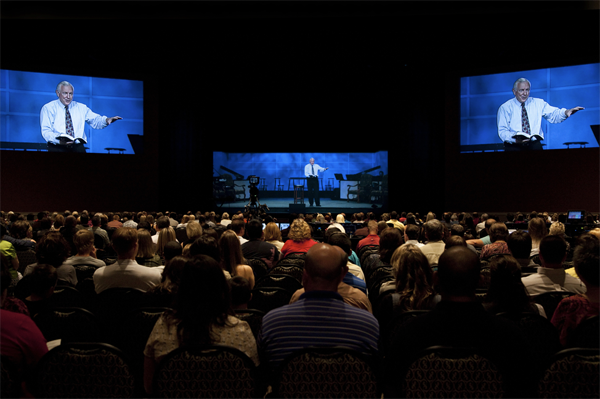
Faith-based IMAG at Green Acres Baptist Church
IMAG is very important. There is a strong relationship between the viewer and the presenter when the viewer can easily and comfortably see the person speaking. It's more powerful. Face-to-face meetings work better than teleconferences. And even theatrical stage performers know not to deliver their lines while facing the back of the stage. People in the audience often feel as though they can't hear you if they can't see your mouth move. So it's a common theatrical "cheat" to walk backwards or diagonally while speaking. Being seen is THAT important.
What IMAG is, and What it Isn't
In many cases, the image on the screen is not always the zoomed-in shot of the speaker. This is because this same feed is also what is streamed out to users on the web, or archived as a documentation of the event, so there will need to be wide shots, shots of the audience, close-ups of product, pre-recorded video segments, slides, graphics, and a whole lot more.
A PowerPoint or other computer-based slideshow presentation on a big screen by itself is not typically called IMAG. Neither is video playback only. But when you mix in a camera that will shoot the person on stage, it all becomes IMAG, and the video playback and slide presentation are generally expected to accompany it.
There are two key ingredients that make it IMAG:
- cameras with long lenses
- big projection screens
Cameras and Lenses for IMAG
To provide the "magnification" part of IMAG, you typically need a broadcast camera in the middle of the auditorium, with a big/long lens on it. This lens is generally not designed to shoot subjects that are closer than 20 feet. It's designed to bring very distant things very close. Think of the big-box lenses that can show you the quarterback's face from the other end of the stadium. Those are generally 80x, 100x and larger lenses and are operated on tripod setups that are designed to hold the massive lens up, and THEN you attach the camera.
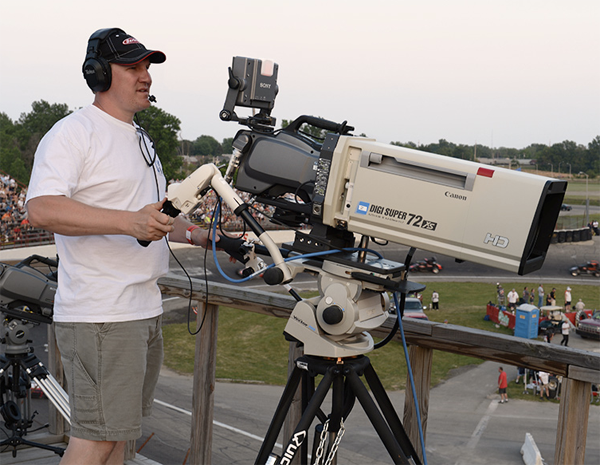
Canon DigiSuper72 lens (© 2011 CVM PRODUCTIONS, INC.)
So, technically, seeing the quarterback's face on the 200' in-stadium LED wall is IMAG.
If you have a smaller camcorder with just a 20x lens that starts at a reasonable wideness, you'll need to do one (or more) of the following things to get the long zoom you need for proper IMAG in a sizeable venue:
- add an optical doubler on the front of the lens
- replace the lens (if possible) with a longer one
- move the camera closer to the subject
An optical doubler is a large piece of glass that acts as 2x "binoculars" to double the zoom of your existing lens. You secure it in front of your existing lens to bring those distant subject closer and make them appear bigger. If you're going to do this often, buying one makes sense. You can also rent them. Below, a Century Converter optical doubler from Schneider Optics.
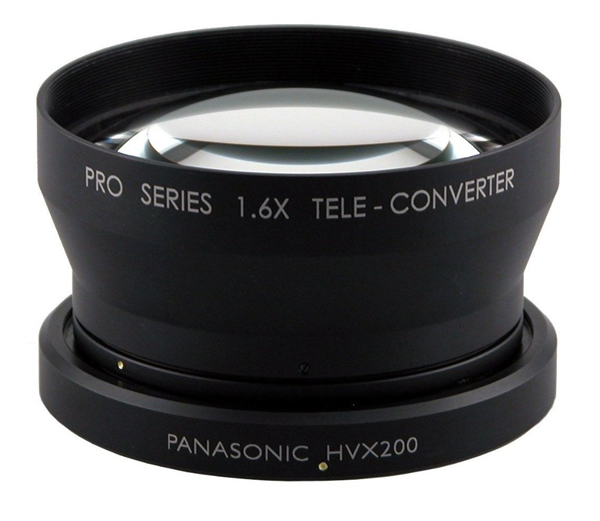
Schneider Optics Century Converter optical doubler for the Panasonic HVX200
On removable-lens cameras, there are often a variety of lenses out there that can be used instead of the stock lens that comes with the camera. Very often, these lenses are available from rental houses, like Bexel and others, that will ship then nationwide, or even internationally. You can use the lens for your event, and then send it back.
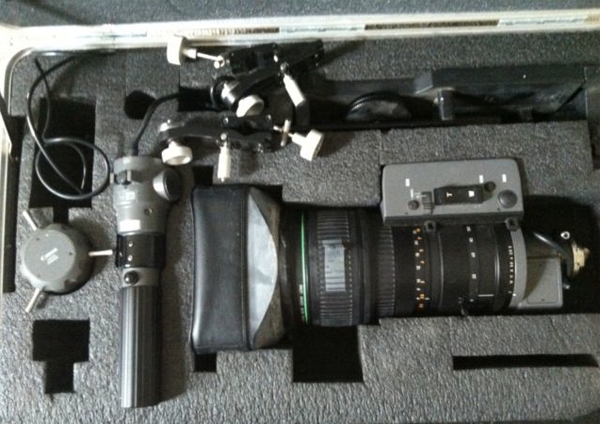
Canon 33x11 lens in case © MK Video Inc.
Lastly, you can set up a camera platform in the middle of the room, or even cheat it closer to the stage and put it lower to the floor so you don't block the view for too many people. This way, you can fill the frame with the face of the person who is speaking, and when that image is put on a 20' screen, the people all the way in the back of the room can clearly see the speaker speaking.
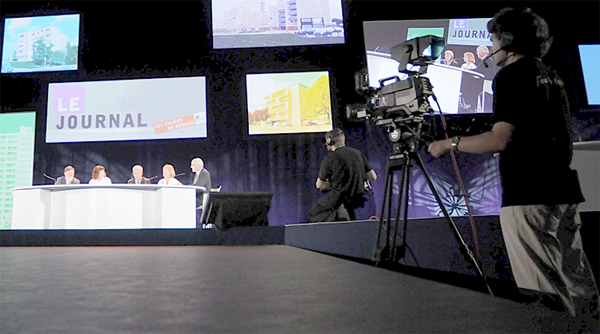
Bringing the camera closer to the subject. Image © Analog Way
Related Articles
Streaming Media Producer kicks off its "What Is...?" series tackling essential topics in the streaming media production world with a look at live switching, touching on the differences between switching and mixing, assembling the components and crew of a live switch, and the basics of "punching" a multi-camera show or event for live delivery.